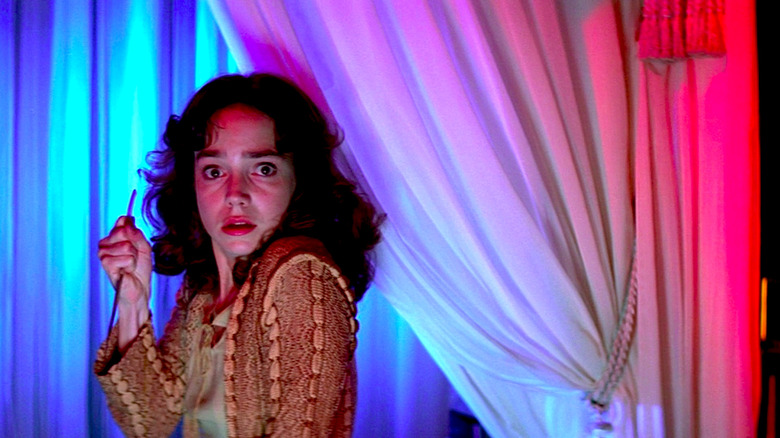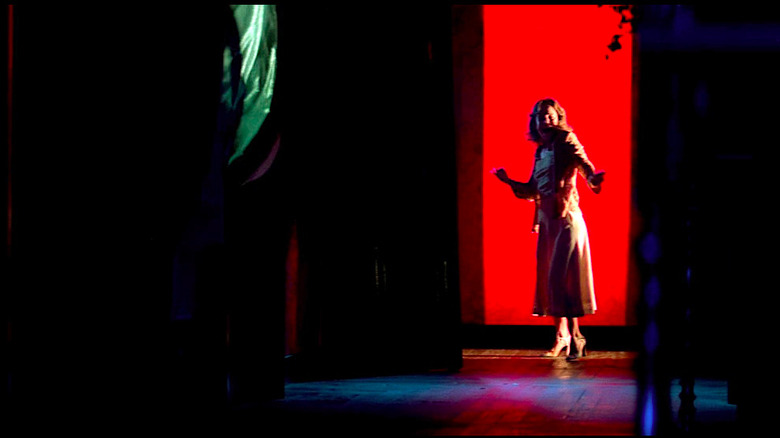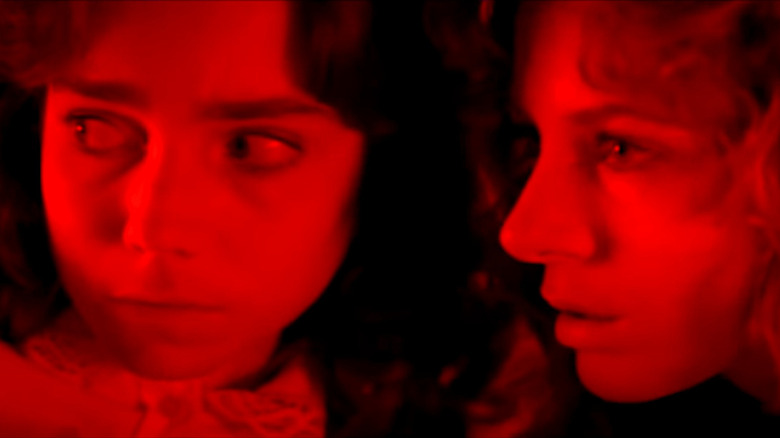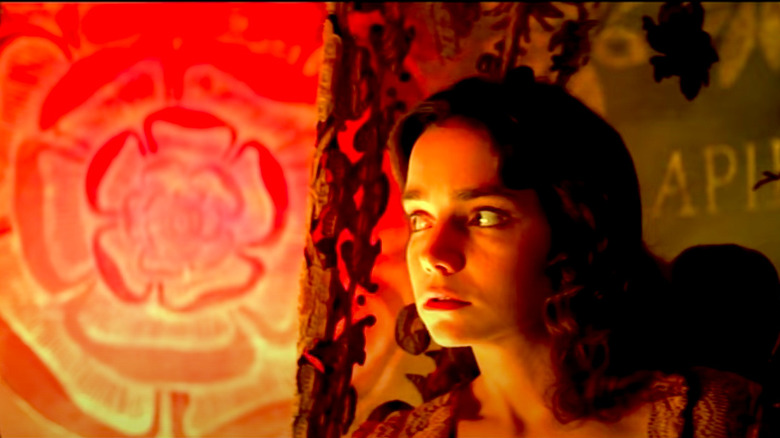How Dario Argento Masterfully Used Lighting In Suspiria
Dario Argento's "Suspiria" is a bedazzling, mind-altering 98 minutes of cinematic genius. The first time I watched it, a friend told me the best way to view it was to sit in the darkest room possible with the volume turned way, way up. I followed these two rules to a tee, and I must say, it truly did affect the way I took everything in. Between the haunting score by the Italian prog rock band Goblin and the vibrant, almost kaleidoscopic colors on screen, to watch "Suspiria" is to experience a very distinct piece of art. Some may find the movie lacking in plot — the 2018 remake did try to remedy this to mostly pleasurable results — and it's true that one can often get lost in the strangeness of the film so much that they don't entirely grasp what's actually going on. But ultimately, that is the beauty of this film. It's meant to ensnare you in its vivid atmosphere, disorienting and bewitching you all at once, so that when the story is finally over, you're left with nothing but the strong impression of having just watched something so unique you will never forget it for the rest of your life.
Of course, there are many things that make "Suspiria" wonderful, but perhaps one of the most memorable parts about it is the color. This is a film that relies heavily on creating dramatic atmosphere by way of colorful, gelled lighting, and much of the movie is constantly basked in vibrant reds and purples and blues. Without this colorful lighting, "Suspiria" would be a very different film — see again, the 2018 remake — so it's worth discussing just how Argento and his crew managed to achieve such fantastical results.
Finding the right man for the job
"Suspiria" tells the story of Suzy Bannion (Jessica Harper), a young dancer chosen to attend a very prestigious German school for ballet. During her stay there, she becomes increasingly paranoid about the women who run the school, especially since many of the students are winding up dead or missing. Eventually, she learns that the school is really just a front for a powerful coven of witches set on finding the perfect girl — which happens to be Suzy herself — to sacrifice. "Suspiria" is often an overdramatic display of violence and gore. It adheres to many of the classic traits of Italian giallo films, and the beauty of the film is often found in the very gore that it exploits. However, the dramatic effect of this all this violence would not be as powerful if it wasn't also so vibrant on screen.
It has been said that Argento was inspired by Walt Disney's "Snow White and the Seven Dwarfs" for the way that this animated film uses color to make Snow White's world come alive. In an article for American Cinematographer, it's noted that "Argento wanted to achieve a palette rich with primary hues and deep blacks" when making "Suspiria," and to do this successfully, he hired Luciano Tovoli to do the film's cinematography. At first unfamiliar with Argento's work — and also, admittedly, not the biggest fan of the horror genre — Tovoli set out to understand this new world he was entering. Eventually, he became comfortable in Argento's world of witches and ballet, and began to help make "Suspiria" the striking masterpiece that it is today. It turns out that Tovoli, for all his lack of horror expertise, was the perfect man for the job.
Colors like that don't come easy
To achieve the colorful atmosphere of "Suspiria," a number of unique techniques had to be used. Oftentimes actors found themselves face-to-face with hot lamps covered in various fabrics and cloths meant to create a specific color. In these moments, Tovoli was looking to wash the actors' faces in a specific hue, and the only way to achieve this was to get impossibly close to the cast. "While shooting, our actors were very often reasonably worried they might be burned!" Tovoli aid in American Cinematographer. Tovoli also used mirrors to create a lot of the colorful visual effects, as well.
Perhaps one of the most important factors in the film's success with color comes in the form of the film that was utilized to shoot the movie. Ultimately, Argento and his crew decided on Technicolor film, which was known for a special dye transfer process that was meant to make colors more vibrant on screen. This film has been used in other movies famous for their color, like "The Wizard of Oz" and "Gone with the Wind," but Argento's "Suspiria" was one of the last to ever get to utilize the film and the process before the company that made the film closed for good. Without this special film, "Suspiria" might not look as vibrant and beautiful as it does today.
The meaning behind all that color
The main colors seen in "Suspiria" are typically reds, pinks, purples, and blues. Occasionally, there are moments where the characters are bathed in yellow, but these moments are usually reserved for certain scenes. Tovoli is quoted in American Cinematographer as saying, "I decided to intensively utilize primary colors — blue, green and red — to identify the normal flow of life, and then apply a complementary color, mainly yellow, to contaminate them," making it clear that the use of more bilious colors are meant to evoke strong distaste in the viewer. When inside the walls of the dance school, color is everywhere, and it is usually most vibrant once night falls. Most of the film's mischief happens during the night, so viewers quickly learn to equate the terror of the events unfolding within the school's walls with the erratic use of vibrant color.
Because "Suspiria" relies so heavily on its colorful atmosphere, it becomes a film that tells its story through its visuals rather than its plot. Color becomes a way to heighten the viewer's emotional response so that even though the scenes are beautiful to look at, they also evoke terror at every turn. This decision to rely on color and the film's magnificent score (seriously, one cannot underplay how important the Goblin's soundtrack is to this film), "Suspiria" is more a movie about experiencing a mood than actually taking in the plot detail by detail. I suppose, in today's day and age, we could describe the look and feel of "Suspiria" as a "vibe," which truthfully is the only kind of vibe I want to have.



